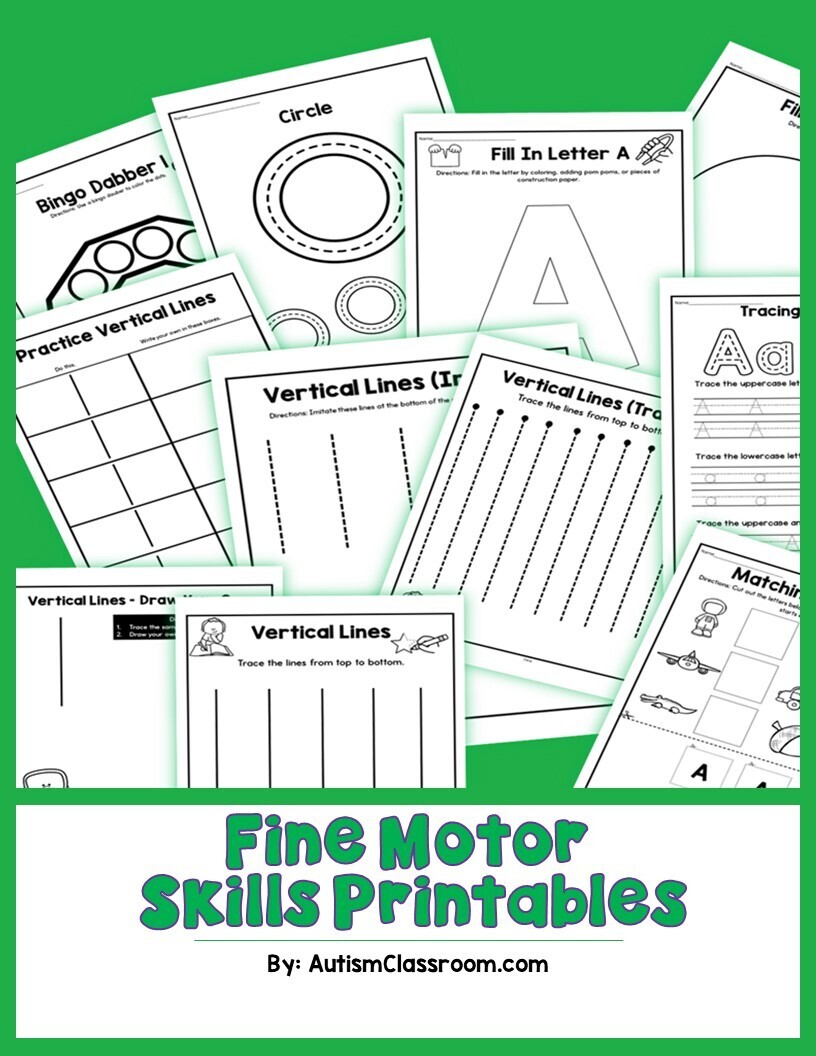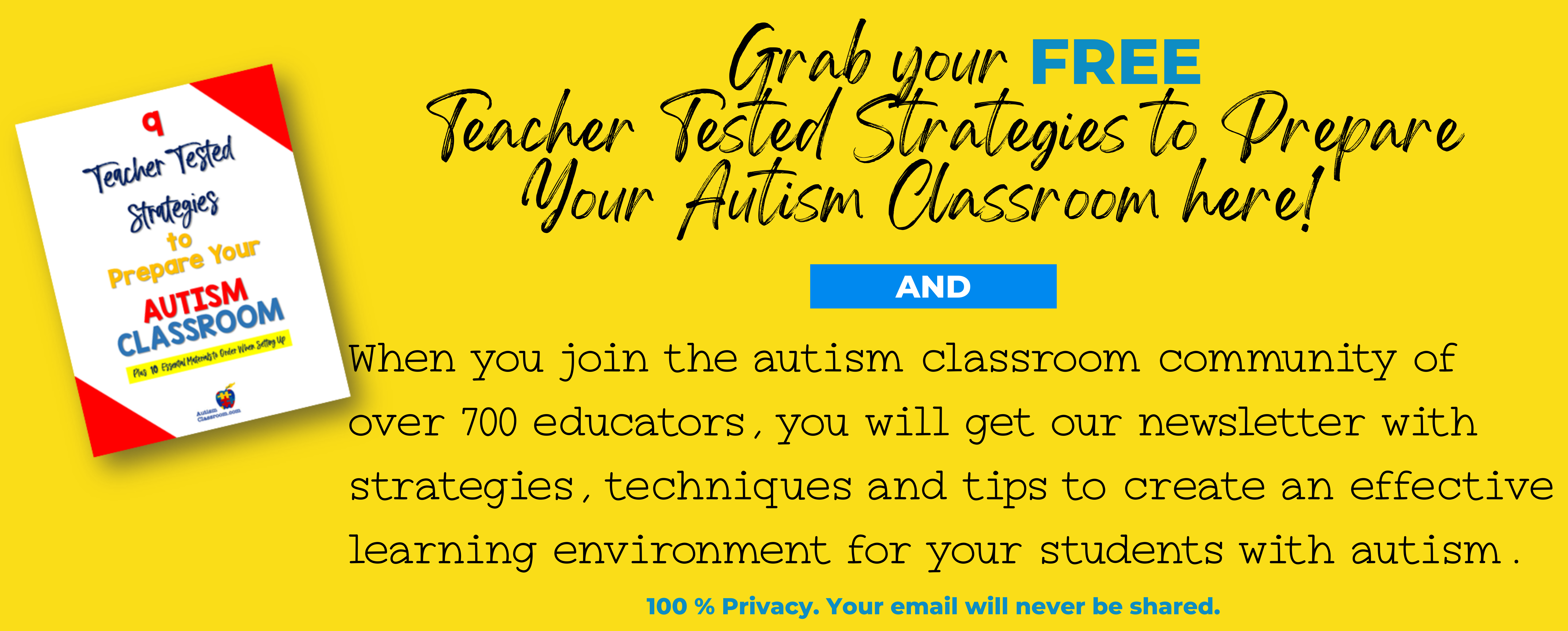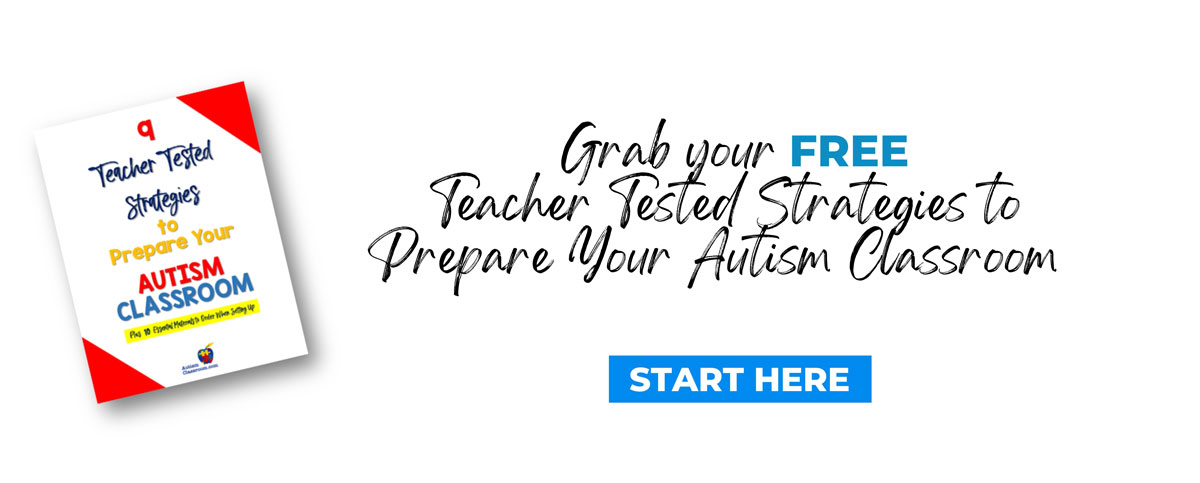As teachers, we are always looking for fine motor activities that can help students improve. Some children on the autism spectrum have difficulties with fine motor skills. Fine motor skills are small movements such as pinching, grasping, or squeezing needed to perform everyday tasks with the hands and fingers. Fine motor autism support is needed for some children in an intensive way, while others may only need a small amount of support.
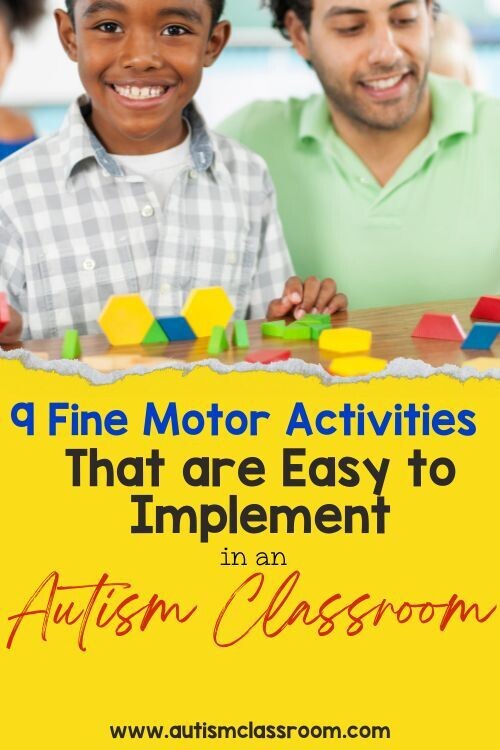
Here are some tips for creating meaningful and productive fine motor centers for young children with autism:
Assessment: Assessing can be as simple as teacher observation and taking notes. If there are any other professionals in the school setting that work with the child, maybe an occupational therapist, or another teacher, collaborate with these professionals. Maybe they have other input that you may have not noticed about the child's fine motor development. Another very valuable source is parent/guardian input. Send a survey home. Ask questions similar to these:
-
-
- What do you think your child is struggling with most?
- What tasks are you seeing them having difficulty with?
- What would you like to see improve in your child?
-
Individualization: As teachers, especially of those with special needs, we know there is no one-size-fits-all in any lesson planning. The same goes for planning fine motor skills lessons and activities. After you have assessed the specific needs, use these observations and notes make a plan for each student. Include goals in this plan along with opportunities to collect data and monitor progress. When creating a goal, it can be helpful to add two or three objectives to reach first.
Look at these as stepping stones towards the progress of reaching the goal. Use product samples of what the students create to show their progress. Or collect data on these objectives in order to monitor progress towards the bigger goal. We've got a number of fine motor task cards and supports here. This will take time and patience but remember, it can be almost or just as rewarding to see a student master an objective as it may be to see them master their goal.
Organize and Structure: Organize your materials for each of your fine motor activities and include clear expectations and structure. You can keep organized by creating and labeling task bins. Each bin could include one task and visuals on how to complete the task. In order to keep a structured setting, use a visual schedule. Laminate this schedule and velcro pictures of expected tasks in order to change them as needed easily.
With this, you can ensure a clear sense of “finished” for the student. This can help lessen any confusion, behaviors or unnecessary waiting time if the students know exactly what they are working on and when it is completed.
Bins can also be used to hold materials for a group lesson. 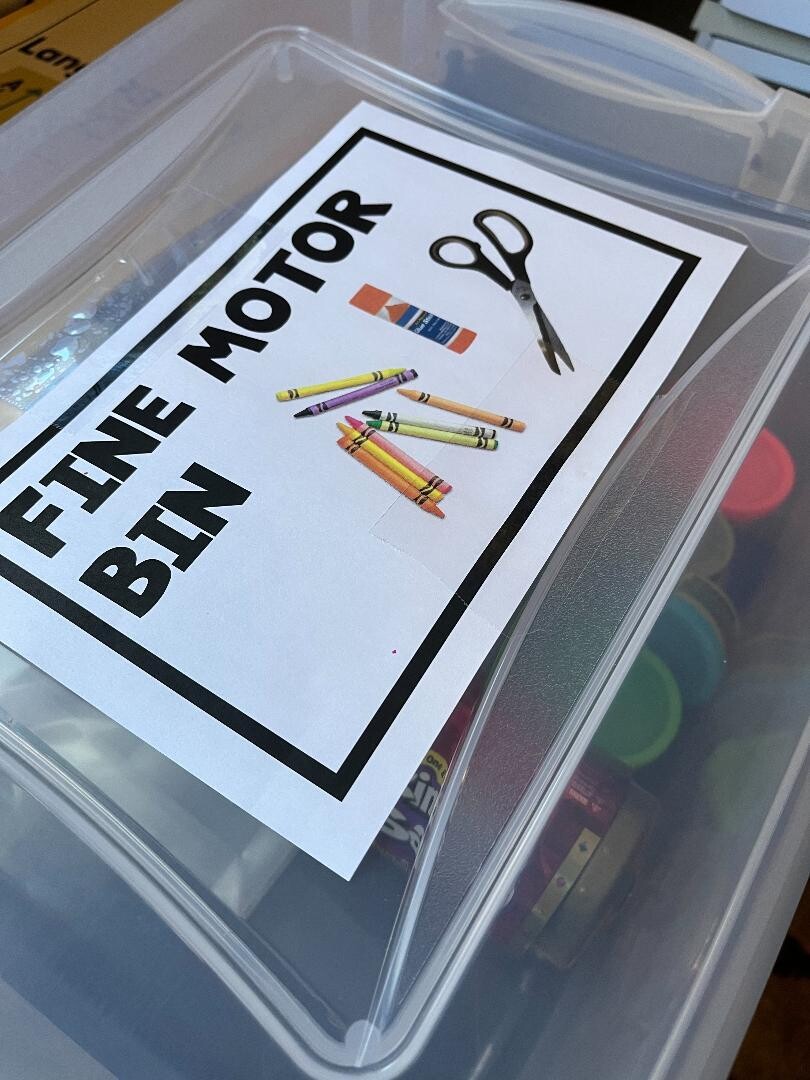
See the full article about that here. For group lessons, think about making and storing the materials for the week. This way, you have everything you need each day.
Interests: In any lesson, including student interests can be an essential way to help keep them interested in the task. You know your students. Use what they enjoy and make themed fine motor activities when you can. This question can even be included in the parent/guardian survey discussed earlier in the “Assessing” section. Include a place on the survey to ask what their child’s interests are and anything that motivates them. Use this valuable information to better engage students and get them excited about learning.
Sensory needs: Along with incorporating interests, including the student's sensory needs and preferences can make the experience more enjoyable. This can include fun fine motor activities with play dough, kinetic sand, different textured paper or objects, etc. These fine motor worksheets have shapes that students can outline with various sensory materials.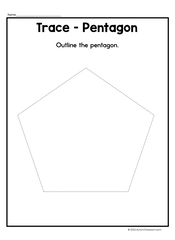
Bonus Tip!
Social Interaction: Set up centers where students can interact with their classmates. This can incorporate social skills into your fine motor skills lessons.
- Partner activities such as puzzles, building blocks, etc.
- Opportunities to ask for something with their preferred method of communication.
- Encourage communication phrases - I need glue please, Please pass me the scissors, thank you, you're welcome, etc.
Fine Motor Skills Examples
Here are some Fine Motor Task Ideas. These 9 ideas are super easy (and cheap!) to create and easy to store!
Handwriting
- Laminate handwriting papers and use dry-erase markers.
- Use page protectors with dry-erase markers. You can put two sheets to make it double sided and you can change the papers out as needed.
- Use Wiki Sticks to stay in the lines (Wax sticks that you can stick on the paper).
- Slant board. This can be easily made with an old binder, tape, and a binder clip. This gives the student an upward angle and a place to rest the wrist and arm while writing.
Coloring
- Find fun and interesting pictures to color. (Remember student interests!)
- Color by numbers, letters, words, etc. Sneak in some extra academic practice!
- Wiki sticks to stay in the lines. (Wax sticks that you can bend into shapes and stick to paper.)
Cutting
- Adaptive scissors may be helpful for some when teaching fine motor skills.
- Instead of tossing your scrap paper, use it for cutting activities. You can draw shapes or lines to guide cutting.
- If you are not sure where to start, we have a resource for teaching scissor work!!!

Folding
- Washcloths or small towels is one of the fine motor activities that is often overlooked, but it is also a life skills lesson.
- Folding papers. (Another use for scrap paper.)
Pinching and grasping
- Clothespins: students can pin clothespins onto laminated task cards or papers. You can make a plain one simply for clipping or academic task cards to practice a skill and clipping the pins)
- Hole punching scrap paper with a handheld single hole punch.
- Fill in shapes or trace shapes, letters, numbers, etc. with glue and small objects
- Squeeze glue in dots or trace the lines with glue.
- Put on small shreds of paper, cheerios or popcorn kernels, etc. to trace or fill in the shape.
Envelopes
- Stuffing envelopes with folded papers.
- Taking out papers from the stuffed envelopes.
Opening and closing
- Twist open and close small screw cap containers.
- Opening and closing bigger plastic containers.
Threading and lacing through cards
- String through aminated papers with holes.
- String through felt shapes with holes.
Worksheets
- Create a “worksheet” on the spot by having students imitate what you write.
- Use pre-made worksheets to practice drawing lines, shapes and letters.
If you are looking for worksheets to incorporate into your fine motor activities, here is the latest set of fine motor worksheets from Autism Classroom. These 180+ pages of fine motor skills worksheets will work well for any students with delays in fine motor, autism or other special needs.
This set may work for younger students in primary grades learning to develop fine motor skills. They can supplement a curriculum or they can be used daily as practice fine motor skills. They can be found here.
The fine motor worksheets are broken up in to 5 sections:
Lines- Work on fine motor imitation targets with these: (Vertical Lines, Horizontal Lines, Curvy Lines, Slanted Lines, Circular Lines, Cross Lines, X Lines, T Lines, C Lines, V Lines)
Shapes- Work on tracing and pasting skills with these: (Shapes, Circle, Triangle, Square, Star, Octagon, Diamond, Rectangle, Pentagon, Oval, Heart, Crescent)
Letters- Work on fine motor writing skills with these: (A-Z)
Numbers- Work on tracing and scissor work with these: (1-10)
Activities- Work on hand coordination with these: (for pom-poms, lacing and bingo daubers)
The Fine Motor worksheets mentioned above can be found here.
The workbook version Fine Motor Skills Printables Workbook can be found here. A peek inside of the workbook can be found on our YouTube page here.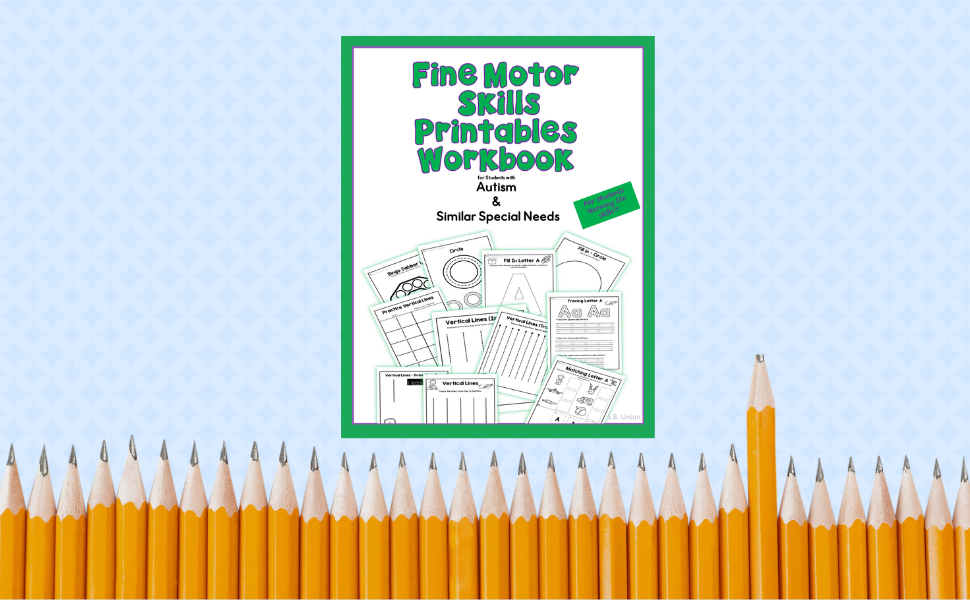
Best wishes as you and your team work to improve the fine motor skills of your students!
NOTE: Teaching older students and working on fine motor skills? See this fine motor autism resource we have for teens.


